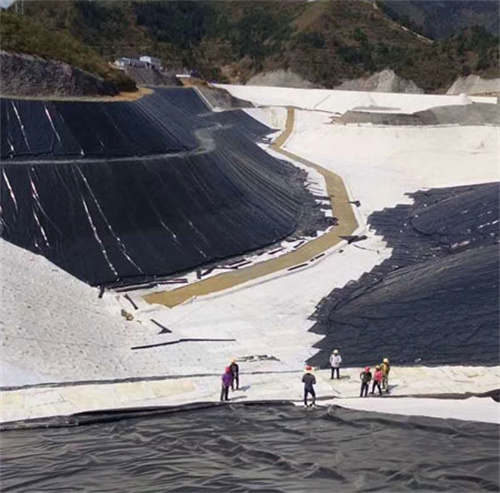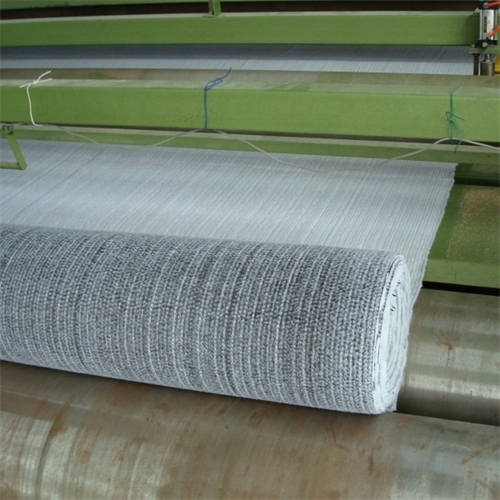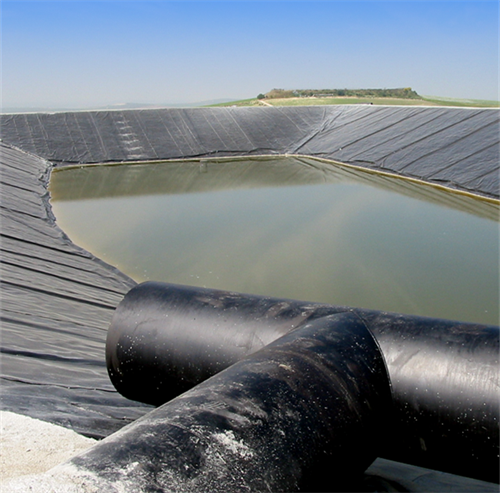Address
Mengshan Road, Wenyang Industrial Park, Laiwu District, Jinan City, Shandong Province
Phone
+86 151 6634 6139
[email protected]
[email protected]
Address
Mengshan Road, Wenyang Industrial Park, Laiwu District, Jinan City, Shandong Province
Phone
+86 151 6634 6139
[email protected]
[email protected]

Geomembranes are synthetic liner materials used for various containment and fluid barrier applications. This guide provides a detailed overview of geomembrane prices, composition, properties, applications, suppliers, and other technical specifications.
Geomembranes are made from different polymers that determine their chemical resistance, strength, flexibility, and other properties. The main resins used are:
| Polymer | Description |
|---|---|
| Polyethylene (PE) | Most common geomembrane material, available as high density (HDPE) and linear low density (LLDPE). HDPE is harder and stronger. LLDPE is more flexible. |
| Polyvinyl Chloride (PVC) | Used for high chemical resistance but less flexible than PE. Comes in reinforced and non-reinforced grades. |
| Ethylene Propylene Diene Monomer (EPDM) | Has high elasticity and weathering resistance but lower strength than PE and PVC. |
| Polypropylene (PP) | Has high strength and puncture resistance but limited flexibility. |
| Chlorosulfonated Polyethylene (CSPE) | Known by the trade name Hypalon®. Has good weatherability. |
The resin choice depends on the chemical exposure, temperature, stress, and elongation needs of the application. Polyethylene is suitable for most uses but PVC, EPDM, PP, or CSPE may be required for specific chemical or environmental conditions.

Key properties that determine geomembrane suitability for different uses include:
| Property | Typical Values | Significance |
|---|---|---|
| Density | 0.93-0.96 g/cm<sup>3</sup> | Affects strength, chemical resistance, puncture resistance. HDPE has higher density than LLDPE. |
| Tensile Strength | 700-2800 psi | Measure of resistance to pulling and tearing forces. HDPE has higher tensile strength. |
| Elongation at Break | 10-700% | Ability to stretch without breaking. LLDPE has higher elongation. |
| Tear Resistance | 100-500 lb/in | Resistance to growth of cuts and punctures. HDPE has higher tear strength. |
| Puncture Resistance | 50-120 lb | Ability to withstand objects pressing against the geomembrane. HDPE offers better puncture resistance. |
| Carbon Black Content | 2-3% | Improves UV resistance and weatherability. HDPE typically has higher carbon black content. |
| Chemical Resistance | Excellent to poor | Depends on polymer. PP and PVC offer best chemical resistance. LDPE and LLDPE have moderate resistance. |
| Temperature Range | -50°C to 80°C | Maximum service temperature range. Polyethylene offers widest temperature range. |
Polyethylene geomembranes provide a good balance of strength, chemical resistance, and durability for most containment applications. PVC, PP, or other materials may be required for high chemical exposure such as landfill leachate collection.
Geomembranes are used for the following applications which have different property requirements:
| Application | Typical Polymer | Key Properties Needed |
|---|---|---|
| Landfill Liners and Covers | HDPE, LLDPE | Chemical resistance, tear strength, flexibility at low temperature |
| Mining Heap Leach Pads | HDPE, LLDPE | UV resistance, tear strength, elongation |
| Oil & Gas Containment | HDPE, LLDPE | Chemical resistance, high temperature performance |
| Canals and Reservoirs | HDPE, PVC | UV resistance, elasticity, strength |
| Water Treatment Lagoons | HDPE, PVC | Chemical resistance, weathering resistance |
| Secondary Containment | PP, HDPE | High strength, tear and puncture resistance |
Polyethylene geomembranes are suitable for most containment needs. PVC may be required for high chemical exposure applications like wastewater treatment. Polypropylene offers very high puncture resistance for demanding applications.

Geomembranes are produced in sheet or roll form in various thicknesses. They must meet standardized test methods and specifications designated by organizations such as ASTM International.
| Parameter | Standards | Typical Values |
|---|---|---|
| Thickness | ASTM D5199 | 0.5mm to 3mm |
| Sheet Width | GRI GM9 | Up to 22m |
| Sheet Length | GRI GM13 | Up to 250m |
| Density | ASTM D792 | 0.93-0.96 g/cm3 |
| Tensile Properties | ASTM D638 | 10-28 MPa |
| Tear Resistance | ASTM D1004 | 36-200 N/mm |
| Puncture Resistance | ASTM D4833 | 100-600 N |
| Stress Crack Resistance | ASTM D5397 | >300 hr |
| Carbon Black Content | ASTM D1603 | 2-3% |
| Carbon Black Dispersion | ASTM D5596 | Grade 1-3 |
Manufacturers provide datasheets listing geomembrane properties that comply with specifications. Testing must be done using standardized lab procedures.
Geomembranes are produced in a range of sheet widths and lengths, and in roll form for ease of transportation and installation:
| Form | Size Range | Description |
|---|---|---|
| Sheets | 1-22m wide <br> 1-250m long | Factory-fabricated sheets for small applications. |
| Standard Rolls | 1-10m wide <br> 50-250m long | Field deployed from rolls. Common sizes based on application. |
| Jumbo Rolls | 15-22m wide <br> 250-1000m long | Minimizes factory seams. Used for large continuous liners. |
| Fabricated Panels | Site-specific | Factory assembled panels with seams for easy installation. |
Narrower rolls are used for applications like gas pipelines or water channels. Wider jumbo rolls minimize field seaming for reservoirs and landfills. Factory panels further simplify installation.
Geomembranes are produced in different grades based on manufacturing process, quality controls, and certification:
| Grade | Description | Applications |
|---|---|---|
| Grade GRI GM13 | Basic geomembrane quality control | Temporary liners, dewatering |
| Grade GRI GM17 | Moderate manufacturing QC | Secondary containment |
| Grade GRI GM19 | Standard engineered liner | Landfills, mining, reservoirs |
| Grade GRI GM21 | High specification membrane | Hazardous waste, full NQA-1 compliance |
Higher grade geomembranes undergo more rigorous testing and inspection during production. Critical applications like hazardous waste containment may require Grade GRI GM21 material. Lower grades can be used for temporary containment needs.
Geomembrane prices depend on the material grade, thickness, size specifications, manufacturer, and order quantity. Typical pricing ranges are:
| Geomembrane | Thickness Range | Price Range |
|---|---|---|
| HDPE | 1.0 – 2.0 mm | $1.50 – $3.00 per m2 |
| LLDPE | 1.0 – 2.0 mm | $1.80 – $3.50 per m2 |
| PVC | 1.0 – 1.5 mm | $3.50 – $7.00 per m2 |
| PP | 1.0 – 1.5 mm | $6.00 – $12.0 per m2 |
| EPDM | 1.1 – 1.5 mm | $4.50 – $9.00 per m2 |
In general, polyethylene geomembranes are the most economical. PVC, PP, and EPDM cost considerably more due to more expensive resins. Thicker geomembranes also command higher pricing.
Jumbo roll prices may be 30-50% lower on a per area basis compared to standard rolls. Factory fabricated panels are more expensive due to value-added processing steps.

Some of the major global suppliers of geomembranes include:
| Company | Brands | Geomembranes | Locations |
|---|---|---|---|
| GSE Environmental | GSE, Roofarm | HDPE, LLDPE, PP | USA, Mexico, Europe, Middle East |
| Solmax | Solmax, SunTech | HDPE, LLDPE, PVC | Canada, USA, Europe |
| Carlisle Construction Materials | CCM, Bento, Sure-Flex | HDPE, PVC | USA, Europe, Asia |
| Agru America | Agru | HDPE, LLDPE, PVC | USA, Middle East, Asia |
| Firestone | Firestone | EPDM, PVC | USA, Latin America |
These established manufacturers have a global presence and can supply geomembranes worldwide. They offer technical support for material selection and design.
Local and regional suppliers are also available in many countries and can offer more competitive pricing. Imported materials from Asia are lower cost but have higher risk.
Here are some recommendations to reduce overall geomembrane costs for liners and containment projects:
Working closely with an experienced geomembrane manufacturer is important to ensure proper material selection and most cost effective solution.
Proper transportation, storage, deployment, seaming and testing is critical to avoid geomembrane damage and maximize performance. Key guidelines include:
It is advisable to have an experienced installation supervisor onsite for quality assurance during critical steps like seaming.
Geomembranes must be tested during manufacturing and installation for compliance to project specifications:
| When | Tests Conducted | Standards |
|---|---|---|
| Incoming Material | Thickness, density, tensile properties, tear strength | ASTM D5994, D5199, D638, D1004 |
| During Production | Sheet size, hospitality, visual defects | EN 13416 |
| Trial Welds | Shear and peel testing on seams | ASTM D6392, D4437 |
| Installed Liner | Air pressure testing of seams and electrical leak detection | ASTM D5820, D7240 |
Records must be maintained for all geomembrane testing. Defect areas should be marked and repaired as needed before covering.
This comparison table summarizes the key factors to consider when selecting a geomembrane material:
| Parameter | Polyethylene | PVC | EPDM | PP | CSPE |
|---|---|---|---|---|---|
| Price | Low | Moderate | High | Very High | High |
| Strength | Moderate | Low | Low | Very High | Moderate |
| Elongation | High | Low | Very High | Low | Moderate |
| Tear Resistance | Moderate | Low | Low | High | Moderate |
| Puncture Resistance | Moderate | Low | Low | Very High | Moderate |
| UV Resistance | Good | Excellent | Excellent | Moderate | Excellent |
| Chemical Resistance | Moderate | Excellent | Poor | Excellent | Excellent |
| Temperature Range | Wide | -10°C to 60°C | -40°C to 70°C | 0°C to 80°C | -20°C to 70°C |
| Popular Applications | Landfills, mining, reservoirs | Chemical containment | Roofing, ponds | Hazardous waste, pipes | Landfills, tanks |
Polyethylene offers the best overall value for most containment needs. PVC and other materials provide higher performance for specific requirements.

Q: What is the typical lifetime of a geomembrane?
A: Properly installed geomembranes can be very long lasting. HDPE liners can last 50+ years. PVC can last 40+ years. Lifespan depends on polymer, thickness, installation quality, and exposure conditions.
Q: Can a geomembrane have holes or defects?
A: Minor defects may occur during manufacturing or installation. Electrical leak detection surveys can identify breaches. These can be repaired by patching or extrusion welding.
Q: Can geomembranes withstand freezing temperatures?
A: Flexible materials like polyethylene retain ductility at low temperatures. They can withstand freeze-thaw cycles. Rigid PVC becomes brittle below -10°C.
Q: What are factory seams versus field seams?
A: Factory seams are made by hot wedge or extrusion welding under controlled conditions. Field seams are made on site after deployment. Seam quality is generally better in factories.
Q: How long does it take to install a geomembrane liner?
A: For a given area, single layer installation rate is approximately 300-500 m2/man-hour. Large projects may take several weeks or months depending on liner acreage and site access.
Q: Can a geomembrane have color other than black?
A: Yes, geomembranes can be produced in other colors like green or tan. However, black is standard because carbon black provides UV resistance.
Q: Are there recycled geomembrane products?
A: Yes, reprocessed materials containing recycled resin are available. Physical properties vary based on recycling method and content. Performance testing is recommended.
Q: What are GRI GM standards for geomembranes?
A: GRI GM standards are manufacturing specifications set by the Geosynthetic Institute. GM13 is the lowest grade, GM21 is highest. Each has defined test methods and acceptance criteria.
Q: How is open textured geomembrane different?
A: It has a textured surface that contacts the soil. This interlocks with the substrate providing very high friction and stability on slopes.
In summary, geomembranes are versatile synthetic materials used for containment applications across industries. Selecting the right product involves considering performance needs, site conditions, project costs, and installation requirements. With proper material choice and construction quality assurance, geomembranes provide long lasting, reliable fluid barrier systems.